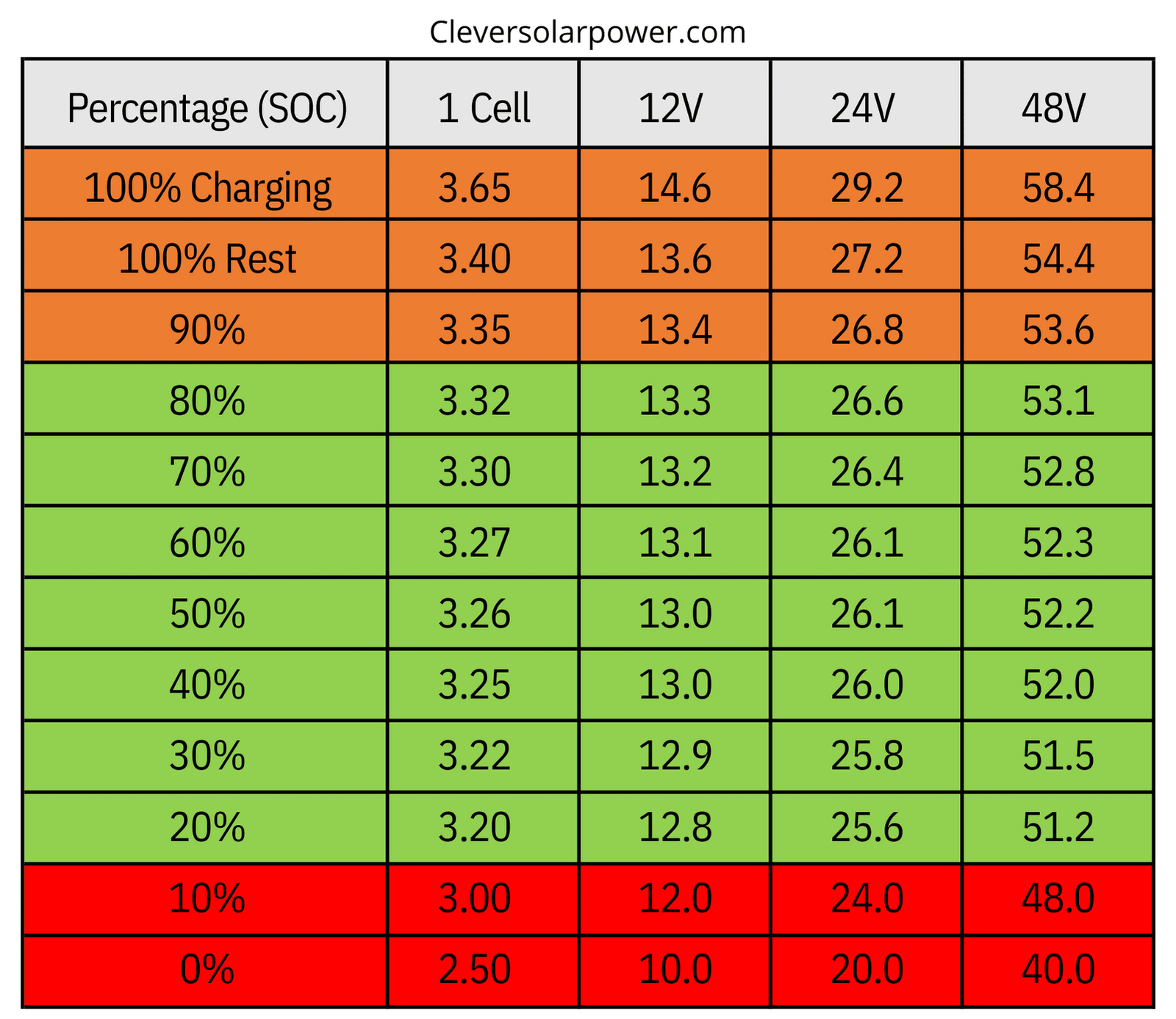This article will tell you all about how to store your LiFePO4 batteries.
I will also answer some common questions.
Can you store LiFePO4 fully charged?
It is generally not recommended to store LiFePO4 (Lithium Iron Phosphate) batteries fully charged for an extended period, as it can cause damage to the battery and shorten its overall lifespan.
When LiFePO4 batteries are fully charged and left unused for a prolonged period, the high state of charge can cause the battery’s internal chemistry to degrade over time, leading to a loss of capacity and a decrease in performance. In addition, storing batteries at high temperatures can also accelerate the aging process and reduce the battery’s overall capacity.
Therefore, it is recommended to store LiFePO4 batteries at a state of charge between 40% and 60% and at a cool temperature, ideally between 32°F and 77°F or 0°C and 25°C. This will help reduce the risk of degradation and prolong the battery’s lifespan.
Should you keep LiFePO4 batteries fully charged?
No, you should not keep your LiFePO4 battery charged at 100%. It is better to cycle the battery from 10% to 90%.
If we look at the lithium battery’s voltage chart, we should keep it between 12.0V and 13.4V (10 to 90%).

If the battery gets used frequently, meaning it will be charged during the day and discharged at night, then you can fully charge the battery.
This will make all the stored energy available for use.
However, if your batteries are always full, then it’s recommended to cycle the battery between 10 and 90%.
You can adjust the voltage ranges on your charge controller and inverter.
What happens if you don’t charge a lithium battery for a long time?
Lead acid batteries (SLA, GEL, and AGM) have a self-discharge rate of 10-15% per month (source).
Lithium batteries (LiFePO4) have a low self-discharge rate of 1-2% per month.
You can leave a LiFePO4 battery longer in storage than a lead-acid battery.
If you do leave a battery too long in storage, the following things can happen:
- Capacity loss: If a lithium-ion battery is completely discharged and left that way for an extended period, it can result in a loss of capacity. This can be caused by several factors, including forming a passivation layer on the electrodes, which can decrease the battery’s ability to store and release energy.
- Internal shorts: When a lithium-ion battery is completely discharged, the electrolyte inside the battery can break down, causing internal shorts. These shorts can damage the battery and potentially lead to a fire or explosion if the battery is charged again.
- Reduced lifespan: Repeated deep discharges and over-discharges can degrade a lithium-ion battery’s lifespan. This can be exacerbated if the battery is left discharged for an extended period.
- Safety risks: In extreme cases, leaving a lithium-ion battery completely discharged for a long time can result in a safety hazard, such as a fire or explosion.
If you charge a battery to 90% and store it, you can leave it for 9 years before it gets to 10% state of charge.
I won’t bore you with the calculations, but I used excel to calculate a 2% monthly discharge at which resulted in 109 months to reach 10%.
Is it OK to leave a LiFePO4 battery on the charger?
Yes.
It is perfectly fine to leave your charger attached to a LiFePO4 battery. The charger will cut off the charge once it reaches a certain current.
However, if you don’t plan on using your battery any time soon, then you should not charge to 100%.
This can lead to the degradation of the battery.

I’m an off-grid enthusiast. I created this website to give clear and straight-to-the-point advice about solar power. I’m also the author of the book ‘Off-grid solar power simplified‘. Read more about me on my about page, check out my Youtube channel, or send me a message.

Currently I am looking to install an off-grid system at my “summer” cabin in the 45-46 latitude, so it is not in use from October to May at least, and sometimes even longer. We were looking at the medium cabin with generator plans from one of your videos, but what guidance do you have for how to manage this system most effectively when not in use?
If you experience freezing temperatures, i recommend getting heated lifepo4 batteries and insulate the battery well. Disconnect the battery when you are away.